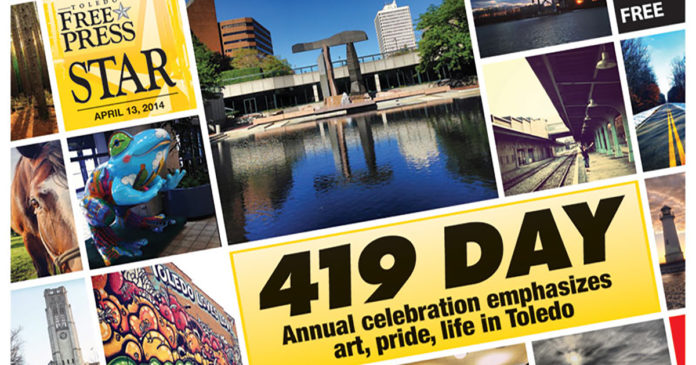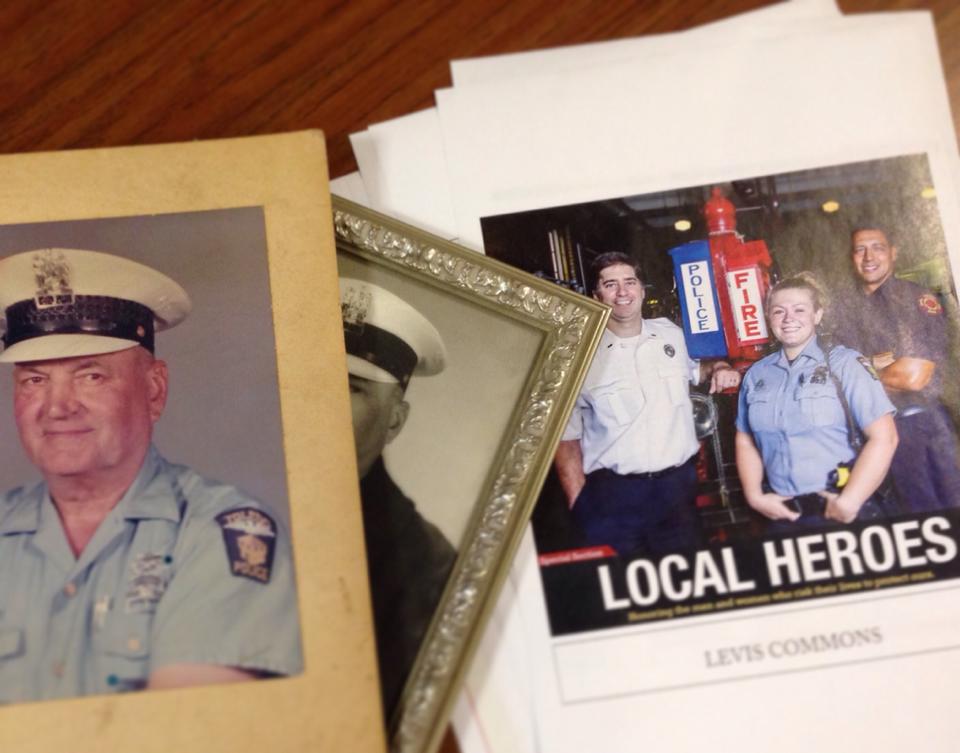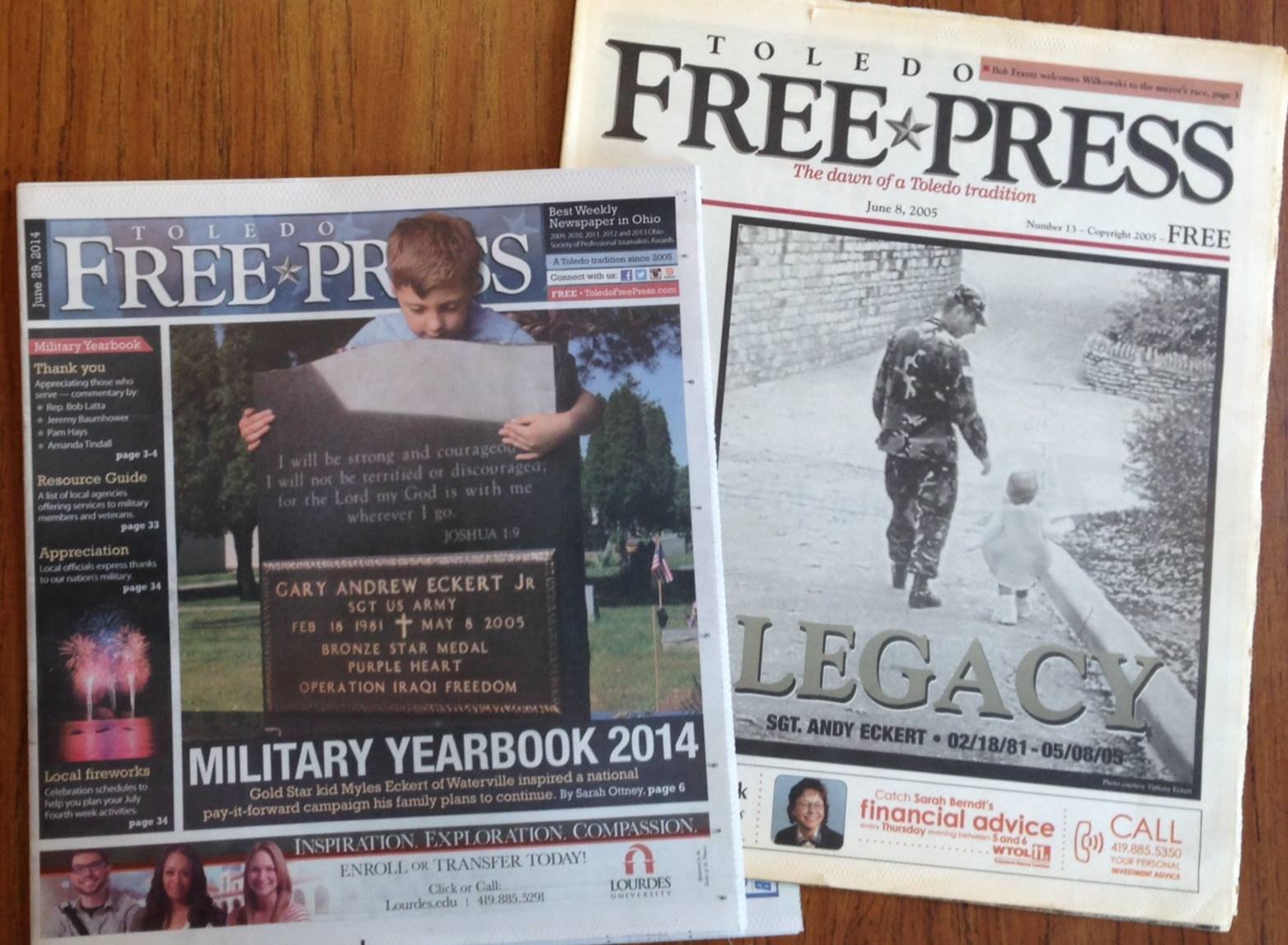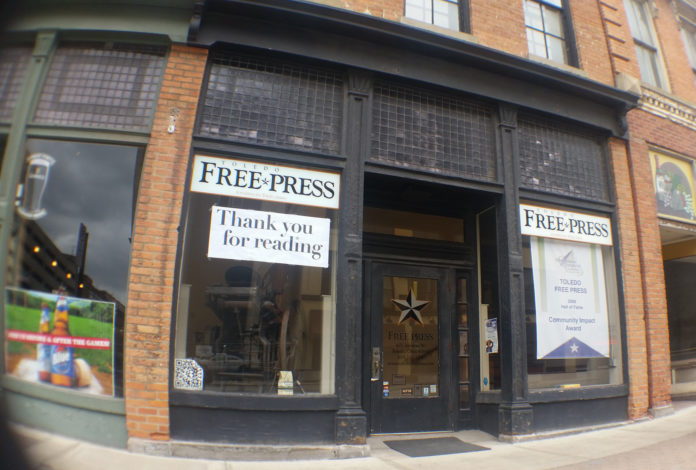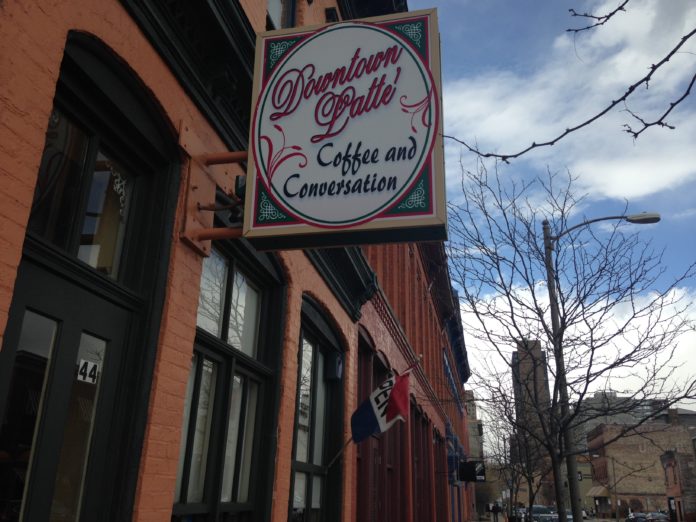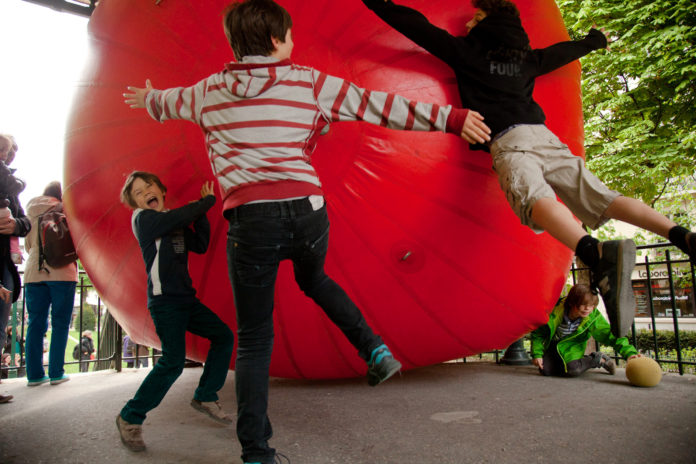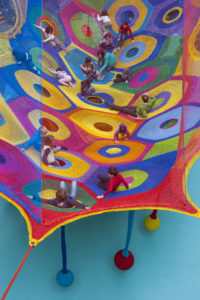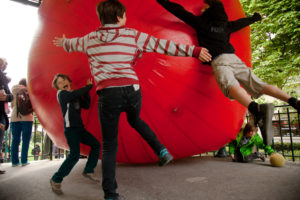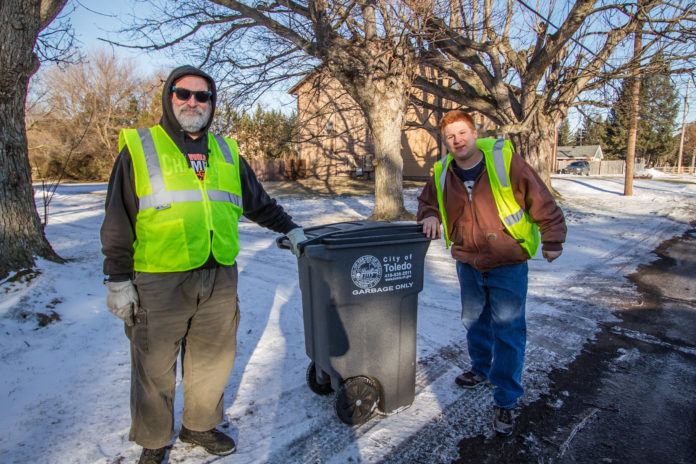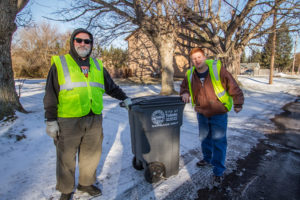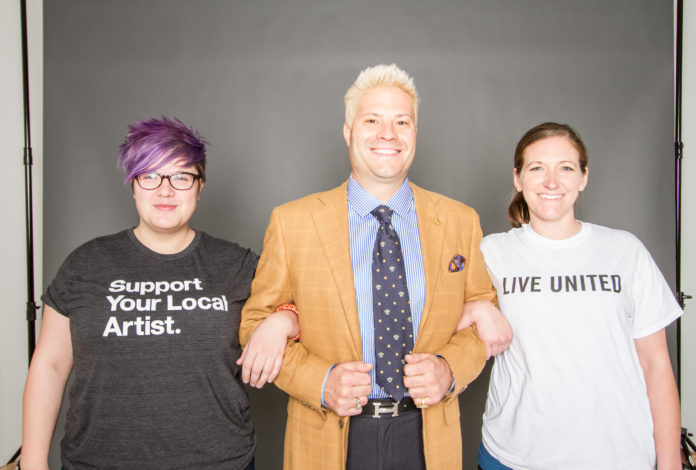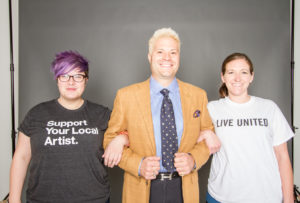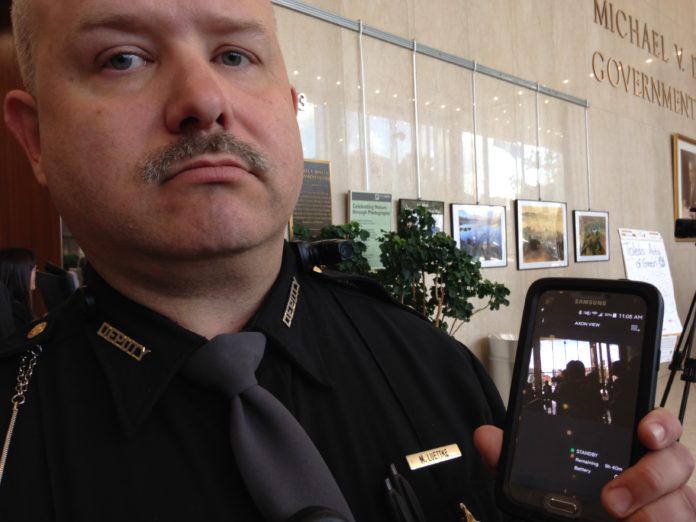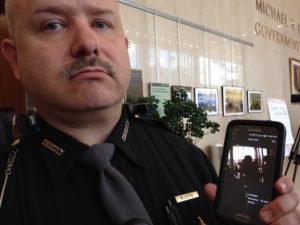I am slowly working my way through the 85-plus page marketability study posted at www.toledoairports.com. The study is the opening step in a proposal from the Treeces — led by Dock David, with father Dock and brother Ben — to privatize operations of Toledo Express Airport and Toledo Executive Airport. It is a thorough examination of the airports and their local context — and I would be lying to claim I understood all of it. It is going to take some time and study to fully assimilate all the details of the report — and again, this is just the first step.
All three Treeces have contributed financial advice columns to Toledo Free Press for several years. They are not compensated for their submissions, and though they advertise on occasion, I am not part of those discussions; I have zero knowledge of the details and that has never had an impact on their regular inclusion. I know the Treeces on a loose social basis, through a few business lunches and parties, and while we are collectively friendly, it would be a stretch to describe us as friends on a personal level beyond our business dealings.
Toledo Free Press has reported on the Treece proposal for the airport (the news broke when I asked Mayor Mike Bell about the discussions during a live Oct. 30 WTOL-11/Toledo Free Press debate) but because of the paper’s relationship with the Treeces and our lack of expertise on the topic, neither I nor Toledo Free Press President and Publisher Tom Pounds have addressed the topic. (Pounds may choose to in the future, but has not as of this writing.)
Harsh words
The Treeces have discussed the proposal during appearances on 1370 WSPD (where I serve as news director for the morning show) but the most media attention has been provided by The Blade. The coverage, particularly in the opinion pages, has been … well, let’s take a look and you can decide.
From “Public assets shouldn’t be sold like junk” by columnist Keith Burris, published Nov. 18, almost three weeks before the Treece marketability study — not their overall plan, mind you, just the marketability study — was published Dec. 6: “When I asked former Mayor Carty Finkbeiner what he thought of the proposed private takeover of Toledo Express Airport, he had a good one-word answer: ‘Outrageous.’ I’m with Carty.”
“So what is Mr. Treece and his company putting on the table? Nothing. And that’s what the city should give back to him: nothing; a dead phone line; no serious consideration at all.”
“… this deal has no meat; no center; no substance.”
“The phrase ‘pig in a poke’ was invented for this deal.”
“I think this deal is dead but, just to be safe, let’s drive a stake through
its heart.”
That seems like a lot of derision and rejection of a proposal that had not (and really still hasn’t) been detailed yet. Maybe it got better for the Treeces in Burris’ Dec. 9 column, “Treece boys not ready for prime time,” which was published just days after the release of the marketability study.
“I am trying to come up with the right comparison for the Treece Boys … Mini Madoffs? Music men, as in Prof. Harold Hill of The Music Man? He said you could learn to play music by thinking about it. Dick Cheney, George W. Bush, and their neo-conservative foreign policy advisers? They developed the definitive mix of arrogance and ignorance in our time.”
“They strike me as little big men. Would-be rainmakers.”
“They are wannabe movers and shakers — wheeler-dealers who cannot wheel and will not deal.”
“The Treeces are low on information, humility, and allies, but long on bluster. They are getting their name brand out there but they come off looking more like play actors than players.”
Well, maybe it didn’t get better. I support criticism as long as it is informed criticism, but Burris’ approach here seems to be ready, fire, aim. Then fire again. Then burn down the target. Then piss on the ashes.
I do not regularly read Burris’ column so I have no idea if this is typical of his work. I did notice during the mayoral election that The Blade tried to buy and artificially force Burris’ relevance through a cascade of billboards and full-page ads, rather than trust him to earn an audience organically; I can only speculate if that is a reflection of his employers’ lack of confidence in his ability to gain readers.
Blade Editor Dave Kushma took his swing at the Treece piñata Dec. 8, also just days after the marketability study was posted, in “Toledo’s renewal needs more than a Michigan roll.”
“After conducting back-channel communications with the Bell administration since last spring, the Treeces are dribbling out some details of their proposal on a Web site,” Kushma wrote.
It sure would be embarrassing to The Blade and Kushma if it were revealed that the daily newspaper was in any way also included in those “back-channel communications” as far back as April, wouldn’t it?
Dock David wrote to me Dec. 16: “In the spring of 2013, before deciding to move forward with a proposal to privatize the operations of Toledo Express and Toledo Executive, we asked a member of the Blade’s staff to speak with John Block about our idea and to inquire whether it was a concept John would oppose. In early May we were told that John had no reaction and it was suggested that we move forward, as the Blade’s publisher wouldn’t take a stand one way or another.”
How’s that for back channels?
“[The Treeces] recruited toadies in local media who are happy to play ball,” Kushma continued. Kushma doesn’t have the courage to name those he disparages as “toadies” but I doubt he is referring to his current allies at 13abc.
“At The Blade, news coverage and editorial opinion are, always have been, and always will be utterly separate functions; one does not influence the other,” Kushma wrote.
If lies make baby Jesus cry, that whopper is going to result in the Little Drummer Boy standing up to his waist in Kleenex. Maybe Kushma and Burris do not know how close they and the Treeces were to being co-workers, as The Blade has tried a number of times to get the advisers to move their column from Toledo Free Press to The Blade.
According to Dock David, who has mentioned that to me a few times and wrote in a Dec. 16 email, “We have been casually approached a number of times over the past several years by different people within The Blade’s organization about writing for The Blade instead of the Toledo Free Press. We were asked most recently when meeting with an intermediary whom we asked to inquire whether John would oppose our airport proposal.”
At least Kushma and Burris put their names on their opinions. These barbs come from an unsigned Dec. 1 Blade editorial, “Air piracy,” published before the marketability study was released.
“a flimsy plan”
“The potential rewards don’t justify the real public risk.”
“The Treece family cites as its main business managing about $40 million for its investment clients — relative chump change in the world of big-time money management.”
“The airport scheme … What the rest of the region would get from their privatization — and wealth-transfer — scheme is far less clear.” Emphasis on “scheme” is mine.
“Mr. Bell, the outgoing mayor, could and should have stopped this nonsense when it first emerged, but he didn’t. Now it’s up to Mr. [Mayor-elect D. Michael] Collins and City Council to make clear that Toledo Express is a valuable public asset that will not be given away to fly-by-night private control.”
Why such vehement animosity, not just to the idea, but to the Treeces personally? Dock has said that it stems from a personal clash between him and a Blade editor from long ago. The romantic in me likes to imagine a high-stakes poker game gone wrong, a sword duel for a woman’s hand or a double-cross of some great import. Whatever it was, it must have been a monumental event in someone’s life for the rancor to be carried for so long.
Vestigial power
But Blade opposition does not equal defeat. The Blade these days is like the Bumble from “Rudolph the Red-Nosed Reindeer.” It may once have been fierce and sharp-fanged, but now its power is largely a vestige of reputation as it blunders around, toothless and confused, wandering closer and closer to the cliff.
Remember how strongly The Blade fought the fates of the old United Way building and the Seneca County Courthouse? I have bricks in my office that show how those fights ended. Remember how The Blade opposed Hollywood Casino Toledo? Did it support the merger of the University of Toledo and the Medical College of Ohio? Perhaps we will one day look back and add the airport privatization battle to the growing list of Blade defeats.
Test for Collins
This is a serious test for incoming Mayor Collins. Will he remain open-minded and facilitate a conversation, or will he let Blade rhetoric and bluster close a door that should at least be inspected before it is bricked over? It’s not an enviable place for Collins to be: Capitulate to a media hissy fit and risk a potential game-changing deal or remain cooperative with this business proposal and risk a poison pen in Pittsburgh. Welcome to the office, Mike.
Many people in economic development wish more local investors with private money would come forward to help Toledo grow. That is a sentiment Toledo Free Press has strongly echoed. But when those who do are treated with such premature hostility (ask Penn National Gaming, Rave Cinemas and Dashing Pacific), it is no wonder Toledo languishes in limbo. It’s not easy to stand up when you know someone is ready to cut you off at the knees.
Michael S. Miller is editor in chief of Toledo Free Press and Toledo Free Press Star and news director for 1370 WSPD. Email him at mmiller@toledofreepress.com.
Just noting for the record: In his Dec. 15 column, Blade ombudsman Jack Lessenberry, discussing Burris’ column on the Treeces, said, “Well, your ombudsman agrees those comparisons are strong stuff — but the beauty of the First Amendment — the foundation of our right of freedom of speech — is that columnists are allowed to express their opinions, no matter how outrageous they seem to be. … That’s what freedom of the press is all about.”


















